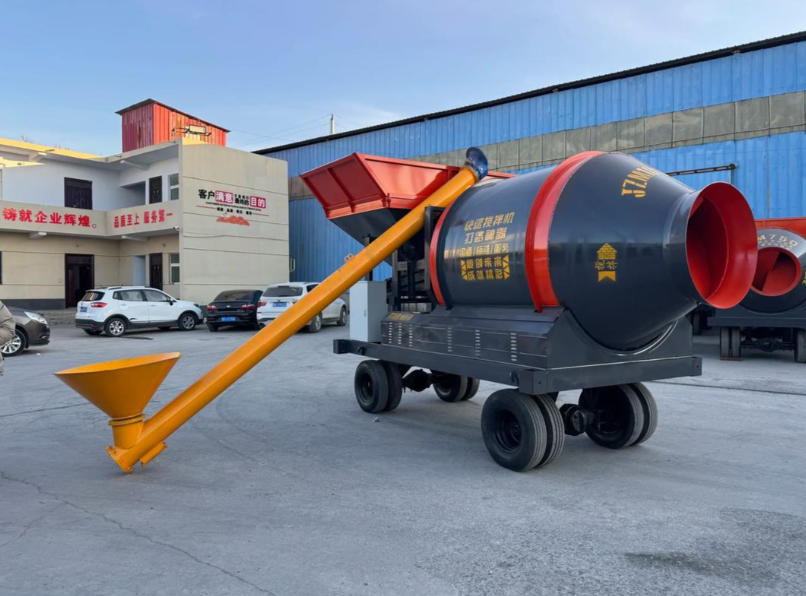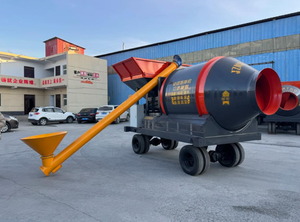
How to inspect a concrete mixer? Inspection, factory inspection, certification service
The concrete mixer, as the core equipment in construction projects, its quality directly affects the quality of concrete mixing, construction efficiency and operational safety. To ensure that the concrete mixer meets the national technical standards and customer requirements, a complete quality control system from design, production to factory delivery must be established. This article will, based on the structural characteristics and usage requirements of the concrete mixer, systematically introduce its classification, inspection items, inspection standards, and key points of factory inspection, providing a professional guide for engineering units, purchasers, and manufacturers.
I. Classification and Quality Focus of Concrete Mixers
(1) Classification by Working Mode and Structure
Batch-type mixer: Batch feeding is adopted. Special attention should be paid to the sealing and uniformity of the discharge mechanism.
Continuous mixer: Continuous feeding and discharging. The stability of material flow needs to be verified.
Self-discharging mixer: Works by gravity mixing. Ensure that the angle of the blades in the mixing drum matches the rotational speed.
Screw-type mixer: Mechanical forced stirring. The durability of the transmission system and the stirring effect need to be tested.
(2) Classified by Installation and Mobility
Fixed-type mixer: Suitable for large-scale mixing stations. The stability of the foundation connection needs to be verified.
Portable mixer: Commonly used at temporary construction sites. It requires assessment of the walking mechanism and steering flexibility.
II. Inspection Standards and Basis for Factory Inspection of Concrete Mixer
(1) Main Standards and Specifications
GB/T 9142–2018 Technical Conditions for Concrete Mixers
GB 4477–2019 Performance Test Method for Concrete Mixers
JG/T 5094–2018 Classification and Model Compilation Method for Construction Machinery and Equipment Products
ISO 18650 – 2016 Performance and Safety Requirements for Concrete Mixers (International Standard)
(2) Key points of factory inspection
Quality management system
Does it have ISO 9001 quality system certification? Has a special quality control plan been established for large equipment?
Are there records of supplier evaluation and incoming material inspection for key components such as steel, motors, and reducers?
Production process control
Does the welding process of the mixing drum comply with the specifications? Is there a report of non-destructive testing?
Is the assembly accuracy of the transmission system controlled within the tolerance range?
Detection capability and equipment
Whether there is a testing platform for stirring performance, a noise detector, an insulation resistance tester, etc.
Check whether the detection equipment is calibrated regularly and whether there are complete calibration records.
III. Inspection Items and Methods for Finished Products
1. Appearance and Structural Inspection
Structural integrity: The mixing drum is free from deformation, the weld seams are uniform and without any missed welds, and the supports are firm without cracks.
Surface treatment: The anti-rust paint coating is uniform, without any sagging or missed application.
Identification is clear: The nameplate information is complete, including model, power, capacity, production date, etc.
2. Performance parameter test
No-load operation: Smooth startup, no abnormal vibration or noise, current within the rated range
Homogenization property: According to the GB 4477 standard, homogeneity is achieved within 45 seconds (△G ≤ 5%, △M ≤ 0.8%)
Discharge time: Discharge time for full load ≤ 15 seconds, residual rate ≤ 5%
Overload capacity: Can operate normally under 110% load, without abnormal noise or overheating.
3. Safety and Electrical System Inspection
Insulation Resistance: Between live components and the casing ≥ 2 MΩ
Grounding resistance: ≤ 0.1Ω, grounding mark is clear
Safety device: The protective covers for the transmission parts are complete and securely installed, and the emergency stop button functions properly.
4. Durability and Reliability Testing
Continuous operation test: Run at full load for 4 hours, with the temperature rise of each bearing not exceeding 40℃
Start-stop test: The machine can start normally after being shut down for 5 minutes at full load.
Sealing test: The sealing components of the mixing drum show no leakage, and the discharge door closes tightly.
IV. Sampling Plan and Decision Rules
Sampling standard: According to GB/T 2828.1, use the special inspection level S-1 (for large equipment, individual inspection can be conducted for each unit)
Defect Classification:
Critical Defect: Insulation failure, structural cracking, lack of safety protection
Main Defects (Major): Insufficient homogeneity, exceeding discharge time limit, abnormal noise
Minor Defects: Paint blemishes, unclear markings, non-critical bolts loosening
AQL Acceptance Criteria:
Serious defect: 0
Main defect: 1.0
Minor defect: 2.5
Quality inspection criteria: Zero tolerance for severe defects. Major and minor defects are judged according to the AQL standard.
V. Packaging, Transportation and Document Requirements
Protection and Packaging
The exposed shaft heads, motors and other critical parts should have anti-rust and anti-damage measures.
Large mixing machines can be packaged in sections, with the interface areas clearly marked.
Random file
The following documents need to be provided: product certificate of conformity, user manual, warranty card, and proof of material for the main components.
The technical documents such as electrical schematic diagrams and structural diagrams should be complete.
Transportation and Storage
During transportation, measures for rain protection and moisture prevention should be taken, and the stacking height should not exceed the specified limit.
During long-term storage, the equipment should be rotated regularly to prevent the bearings from rusting.
VI. Common Quality Issues and Improvement Suggestions
Typical Defects: Rapid wear of the mixing drum liner, abnormal noise in the transmission system, poor sealing of the discharge door
Process control points: It is recommended to set CTQ control points at the welding process, dynamic balance debugging, and final assembly inspection stations.
Factory inspection improvement direction: Introduce a system for collecting equipment operation data and establish a model for predicting the lifespan of key components.
Summary
As a heavy construction machinery, the quality control of concrete mixers needs to take into account structural strength, performance indicators and usage safety. Through systematic factory inspection and post-production tests, combined with multi-dimensional tests such as appearance, performance, safety and durability, the equipment failure rate can be significantly reduced. It is recommended that purchasers focus on reviewing the production process and testing capabilities of the suppliers, and conduct on-site test runs and acceptance before the equipment delivery to ensure that the products meet the standards of the construction machinery industry and the requirements of the construction site.
分享这个商品

How to inspect a concrete mixer? Inspection, factory inspection, certi
The concrete mixer, as the core equipment in construction projects, its quality directly affects the quality of concrete mixing and the safety of operations.
